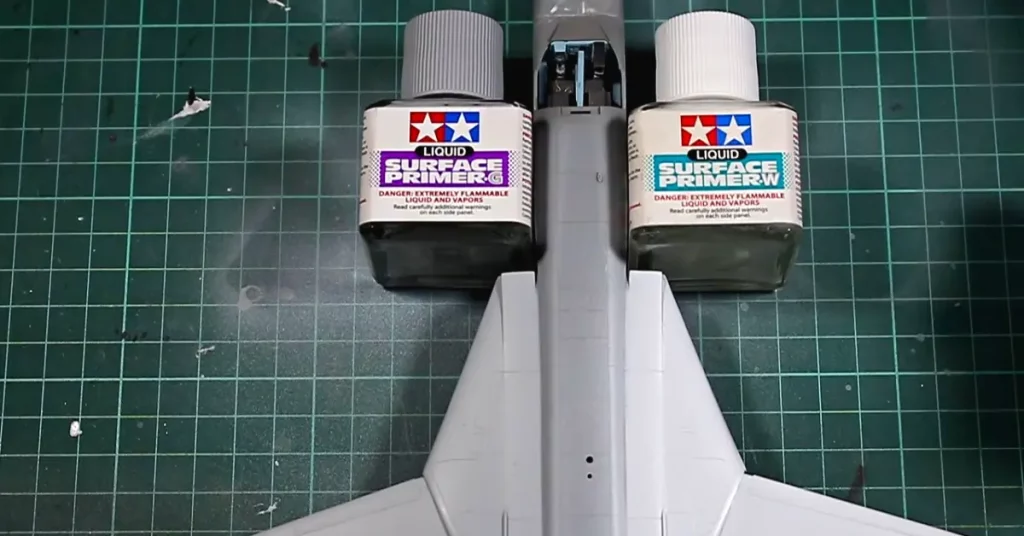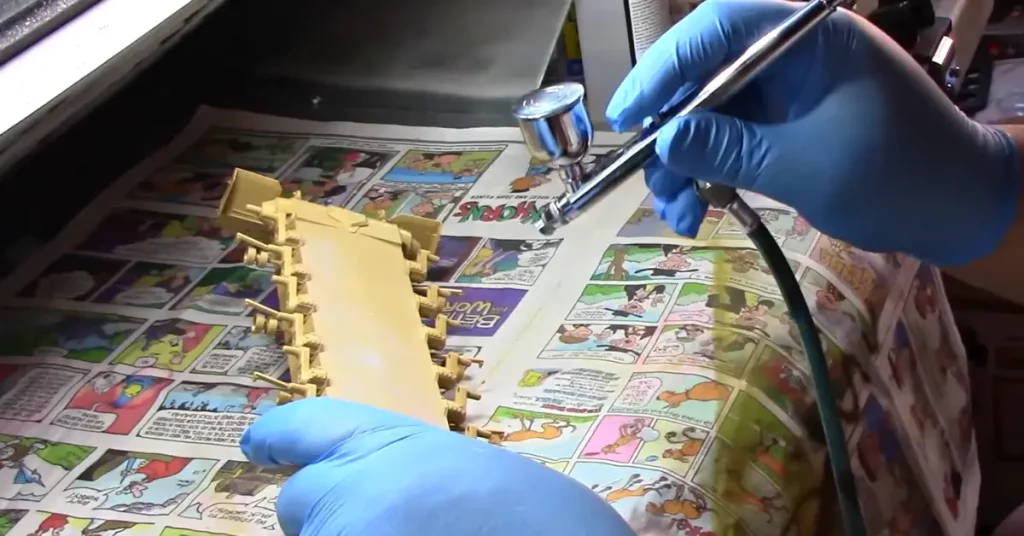Do you obsess over getting the perfect airbrush result when painting your scale models? Have you been wondering whether or not Tamiya Acrylic paints need a primer before starting to paint?
If you’re into model-making, you’ve likely come across Tamiya acrylics. These paints are widely regarded as some of the best on the market, but there’s one question that often comes up: do Tamiya acrylics need a primer before use?
This article will help unravel the mystery and inform you of what you need to get that bright, glossy Tamiya Acrylic finish every time. Read on to discover the answer.

Do You Need Primer with Tamiya Acrylic Paints?
The answer is yes; you should always prime your surfaces before using Tamiya acrylic paints. It is not only for giving the paint a place to bite into but also for smoothing the surface, showing any mistakes in the bodywork, and preventing peeling and chipping down the road.
It also makes it easier to apply thin coats of paint and helps create an even finish with no brush strokes visible. Also, primers can help protect against corrosion or rust if you’re working with metal pieces or models. You can remove Tamiya acrylic paints even after using a primer.
Advantages of Using Primer Before Tamiya Acrylics
1. Tamiya Acrylics Adhere Better to a Primed Surface:
Tamiya Acrylics are designed to adhere well to a variety of surfaces, but they will achieve the best results when used on a primed surface. Priming provides a smooth, even surface for the paint to adhere to, and it also helps to prevent the paint from chipping or flaking off down the road.

2. Tamiya Acrylics Dry Faster On Primed Surfaces:
Another advantage of using a primer before painting with Tamiya Acrylics is that the paint will dry faster. This is because the primer ensures that the paint will dry, which helps to prevent any drying issues that can occur when painting on an uneven surface.
3. Using Tamiya Acrylics on Primed Surfaces Reduces Fading:
When exposed to sunlight, paint can fade over time. But, when used on a primed surface, Tamiya Acrylics tend not to fade. In other words, the primer provides a barrier between the paint and the sun’s UV rays, which helps to protect the color of the paint.
4. Tamiya Acrylics are Less Likely to Crack on Primed Surfaces:
A primer can also help prevent the cracking of Tamiya Acrylic paint when used before painting. Primer serves as a flexible layer that helps to absorb any movement or expansion that might occur, which can cause cracks in the paint.
5. Tamiya Acrylics Provide Better Coverage over Primed Surfaces:
When applied to a primed surface, Tamiya Acrylics will provide better coverage than if they were applied directly to an unprimed surface. Primers create a uniform base for the paint to cling to, thus preventing missed spots or thin areas in the coverage.

6. Primed Surfaces are Easier to Sand with Tamiya Acrylics:
If you need to sand down your painted project for any reason, it will be much easier to do so if you have used primer beforehand. This is because primer ensures a smooth, even finish that is easy to sand down without damaging the underlying material.
Tips to Apply Primer with Tamiya Acrylics
If you decide to use a primer with Tamiya Acrylics, there are a few things to keep in mind:

- Make sure to choose a primer that is compatible with acrylic paints. Some primers contain chemicals that can react with acrylic paints and cause them to become brittle or yellowed.
- It is best to apply primer with an airbrush, as this will give you a smooth, even coat. If you do not have an airbrush, you can apply primer with a brush, but be sure to use thin, even strokes so that the primer does not clump up on the surface.
- Allow the primer to dry completely before applying the paint. Depending on the type of primer you are using, this could take anywhere from 30 minutes to 24 hours.
Which Type of Primer Should I Use For My Project?
When it comes to primers for use with Tamiya acrylics, there are two main options available: water-based primers and solvent-based primers. Water-based primers are generally cheaper, easy to clean up after use (just soap and water), and have less odor compared to solvent-based ones.
They can also be used on both plastic and metal surfaces without worry of damage or discoloration. Solvent-based primers are more durable and they can cause damage or discoloration on certain types of plastics, so be sure to test them first if necessary.
What Happens if You Don’t Use Primer for Plastic?
If you don’t use a primer before painting plastic, you’ll wind up with an uneven and spotty finish. The plastic’s smooth surface won’t provide the best bond for the paint, leaving it vulnerable to chipping and flaking off after a short amount of time.
Also, because most primers chemically adhere to plastic, you won’t have the same lasting results without one. While painting without primer may seem like a quicker fix, it can cause more damage in the long term. By taking the time to apply a quality primer that is suitable for your project, you will be ensured higher-grade results that last longer.
Conclusion:
All in all, it is best to use a primer if painting with Tamiya Acrylics. Primers can help ensure an even surface and provide an ideal base for paint adhesion and longevity. Primers can also allow for seamless coverage of lighter colors over darker ones.
Even though the Tamiya Acrylics have excellent coverage, they will still benefit from a primer application. It should also be noted that while a primer is not strictly necessary, it certainly improves the outcome of any project. Thanks for reading.

S. Pushon is a paint expert, self-taught artist, and currently working as an adviser in the paint industry as a Quality Improvement and Development Assistant.
An artist by heart, he draws remarkable art pieces and as a professional paint industry individual, he seeks the insight and shares with enthusiasts. Read more…

